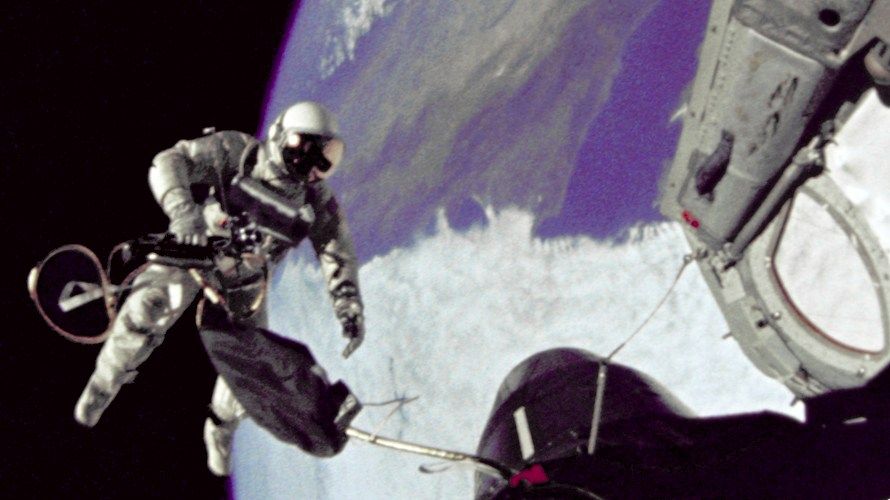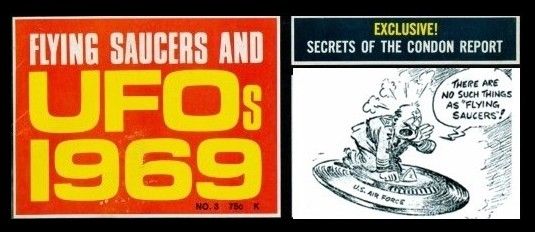NASA Astronaut Confession: ‘Noticed a Cylindrical Object’
Article by Sebastian Kettley July 3, 2020 (express.co.uk)
• NASA’s Gemini 4 mission, in June 1965, was the tenth American spaceflight and the second crewed spaceflight. (Astronauts James McDivitt and Ed White circled the Earth 66 times in four days.) On the second day of the mission, as White was sleeping, McDivitt recalled seeing an unidentified object outside the Gemini spacecraft.
• McDivitt said in 1975, “We were in drifting flight… there was something out in front of me or outside the spacecraft that I couldn’t identify and I never have been able to identify it.” It was “a white cylindrical shape with a white pole sticking it out of one corner of it – it looked like a beer can with a smooth pencil sticking out.”
• McDivitt guessed that the object was close to the spacecraft since he could easily see it. He grabbed two cameras and took photos of the UFO. “As the sun shone on the window, I could no longer see out and the thing just disappeared,” said McDivitt. “(Later) they checked NORAD records to see what they had up on radar and there wasn’t anything within very close range of us.”
• After the astronauts returned to Earth and the mission’s photographs were processed, the pictures failed to reveal what the astronaut has seen. “I went back and went through each frame of all of the pictures that we took and there wasn’t anything in there like what I had seen,” said McDivitt. Some journalists speculated that the astronaut may have seen a secret Soviet satellite. Or it could have been ‘orbital debris’ from the Gemini 4 launch.
• Former space engineer and rocket scientist James Oberg said the Gemini 4 was the only one of 10 manned flights in which a rendezvous was attempted (and nearly accomplished) with a beer can-shaped target (ie: the upper stage of the Titan II rocket that had been floating in space for 50 hours). It is likely the astronaut witnessed the Titan’s booster stage.
• Oberg noted that McDivitt “refused to believe he could have misidentified that object – but both his degraded eyesight and different viewing angle at the time of the sighting eliminate any reliability from that claim.” “[Y]ears of UFO research have taught us the surprising lesson that pilots re, in truth, among the poorest observers of UFOs,” said Oberg, “because of their instinctive pattern of perceiving visual stimuli primarily in terms of threats to their own vehicles.”
The NASA astronaut encountered the UFO on the second day of the Gemini 4 mission in June 1965. Gemini 4 was the second crewed spaceflight in the Gemini programme and the tenth American spaceflight. On the second day of the mission, which saw Mr White perform the first US EVA or spacewalk, Mr McDivitt recalled seeing an object outside the Gemini spacecraft.

He said back in 1975: “At the time I saw it, I said there was something out in front of me or outside the spacecraft that I couldn’t identify and I never have been able to identify it, and I don’t think anybody ever will.
“We were in drifting flight and my partner, Ed White, was asleep.
“I couldn’t see anything out in front of me except just the black sky.
“And it was rotating around, I noticed something out in front that was a white cylindrical shape with a white pole sticking it out of one corner of it – it looked like a beer can with a smooth pencil sticking out.”
The astronaut then grabbed his camera and took a few photos of the object.
But he did not correctly focus or expose the photographs to properly capture the UFO.
He did, however, later guess the object was floating fairly close to his spacecraft since it was visible to him.
The astronaut said: “I grabbed two cameras and took pictures of it.
“As the sun shone on the window, I could no longer see out and the thing just disappeared.
FAIR USE NOTICE: This page contains copyrighted material the use of which has not been specifically authorized by the copyright owner. ExoNews.org distributes this material for the purpose of news reporting, educational research, comment and criticism, constituting Fair Use under 17 U.S.C § 107. Please contact the Editor at ExoNews with any copyright issue.

